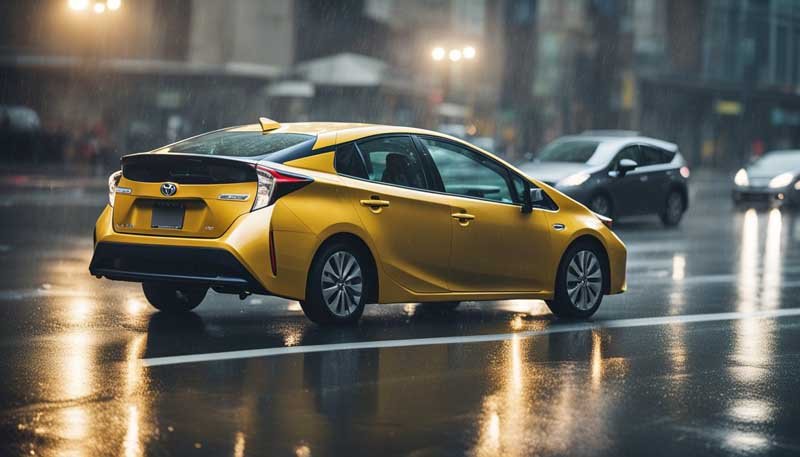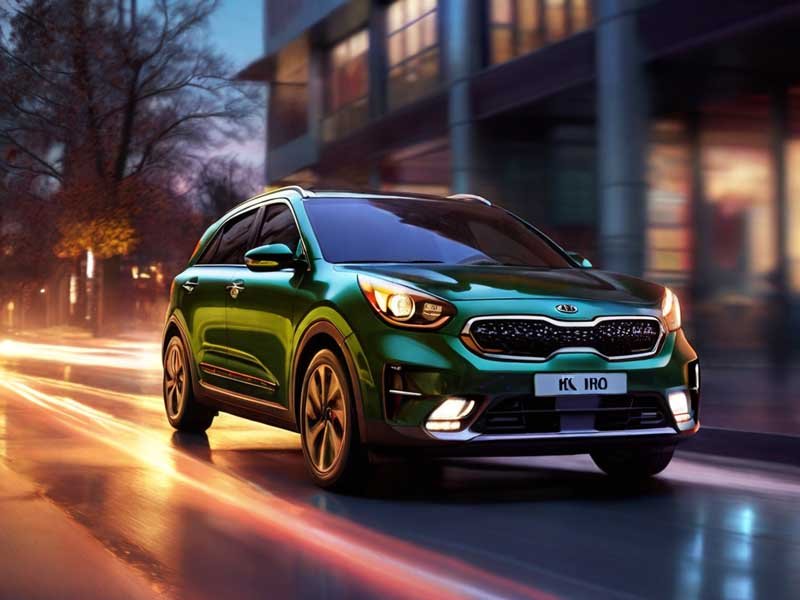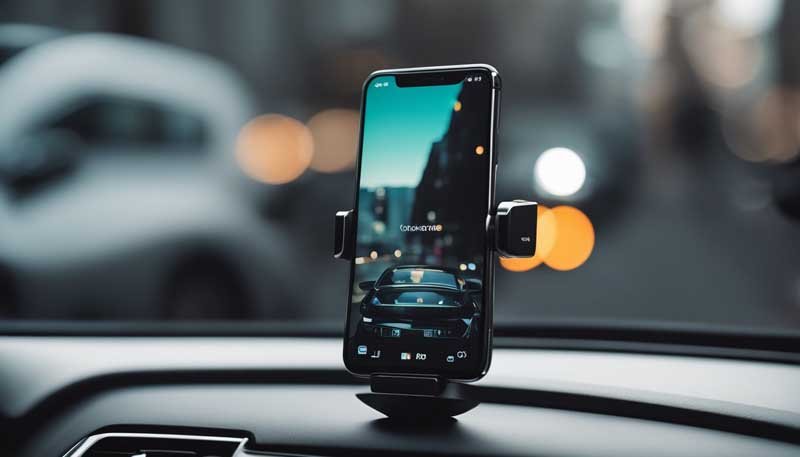In the fast-paced environment of private hire driving, defensive driving emerges as a pivotal skill set that significantly increases road safety. It extends beyond mere driving abilities to encompass an advanced level of preparedness in anticipating potential hazards. By mastering defensive driving techniques, you enhance not only your safety but also the security of your passengers and other road users.
Understanding the core principles of defensive driving, you can effectively manage risks and adapt to a myriad of on-road scenarios. This involves being aware of your surroundings, maintaining safe distances from other vehicles, and knowing when and how to adjust your driving to meet changing conditions. Furthermore, communication with other drivers through signals and body language plays a critical role in preventing misunderstandings and potential accidents.
Key Takeaways
- Defensive driving bolsters road safety for you and your passengers.
- Safe distance and situational awareness are crucial for risk management.
- Communication and adaptability are key to navigating on-road interactions.
Understanding Defensive Driving
Private Hire or PCO Drivers are on the road for long hours. So drivers who are operating apps such as Uber Driver or Bolt Driver must learn what defensive driving involves and the fundamental principles that underpin this proactive approach to road safety.
Defining Defensive Driving
Defensive driving is a strategic driving method where you actively observe and anticipate other road users’ behaviours. Your goal is to employ preventive measures to considerably lower the risk of collisions. This concept encompasses more than basic driving skills; it’s a mindset that prioritises safety above all else when behind the wheel.
Core Principles of Defensive Driving
1. Visibility: Ensure you’re always visible to other drivers, using headlights when necessary and avoiding blind spots.
2. Awareness: Constantly scan your surroundings and anticipate the actions of other drivers and pedestrians, preparing to react accordingly.
3. Readiness to Act: Stay alert and ready to employ evasive manoeuvres, such as braking or steering quickly, to avoid potential dangers.
4. Adherence to Traffic Rules: By obeying speed limits, traffic signals, and other road regulations, you significantly reduce your risk of accidents.
5. Patience: Recognise that reaching your destination safely is more important than speed, allowing ample time for every journey and avoiding aggressive driving behaviours.
By embracing these core principles, you bolster your defensive driving techniques, contributing to a safer driving environment for yourself and others on the road.
The Importance of Situational Awareness
Situational awareness is crucial for private hire drivers to maintain safety and efficiency on the road. It involves being cognisant of your environment and staying alert to potential hazards.
Assessing Your Surroundings
As you navigate through traffic, constant vigilance is key. Survey your immediate vicinity regularly, using mirrors to keep an eye on other road users and changing road conditions. It’s essential to observe the behaviour of pedestrians and cyclists too, as they can be unpredictable.
Anticipating Hazards on the Road
Anticipation allows you to prepare for the unexpected. In essence, think ahead about what other drivers might do and have an avoidance plan. For example, if you see a ball bouncing onto the road, slow down and prepare for a child to follow. Understanding signs of potential hazards can significantly reduce the likelihood of collisions.
Adapting to Different Driving Conditions

As a private hire driver, your ability to adapt to varying driving conditions is crucial for ensuring the safety and comfort of your passengers. You’ll need to manage diverse weather situations, navigate different terrains, and remain composed in traffic or during night hours.
Weather Considerations
Weather significantly impacts how you should operate your vehicle. In heavy rain, reduce your speed to counteract reduced visibility and increased stopping distances. Always turn on your headlights and use windscreen wipers to improve visibility. During snow or ice conditions, use gentle manoeuvres and consider carrying de-icing equipment. For comprehensive advice on maintaining a safe distance in varied conditions, consider the guidelines from The Highway Code.
Navigating Urban and Rural Roads
Urban and rural roads present unique challenges. On crowded city streets, stay vigilant for pedestrians, cyclists, and sudden stops. In contrast, rural areas often have narrower lanes and unmarked edges, requiring a more cautious speed and keen observation for potential hazards like wildlife or sharp bends. Adjusting your driving to the road type is a fundamental defensive driving technique.
Stay Calm in Traffic and Alert During the Night
In traffic, keeping a level head is key to avoiding accidents. Breathe deeply, and don’t succumb to road rage; your calm demeanour can influence the situation positively. Conversely, night-time driving demands heightened alertness. Your field of vision is limited, and it’s more challenging to spot obstacles. To minimise risks during these hours, ensure your headlights and taillights are functioning correctly and adjust your driving to the visibility.
Speed Management and Safe Following Distances

Managing your speed and maintaining a safe distance from the vehicle in front are crucial for preventing collisions and ensuring safety on the road. Both require constant attention and adjustment based on driving conditions.
Controlling Speed Appropriately
Controlling your speed is not just about adhering to speed limits, but also adjusting your velocity in response to the current road, traffic, and weather conditions. For example, on wet or icy roads, you should reduce your speed significantly below the posted limit to maintain control of your vehicle. – Speed limits are the maximum legal speeds under ideal conditions. Always be prepared to drive at lower speeds in response to hazards or poor conditions.
- Weather conditions such as rain, ice, or fog call for a reduced speed to increase reaction time and stopping distances.
- Heavy traffic requires reduced speed to be able to respond safely to sudden stops or erratic behaviour from other drivers.
Maintaining Safe Gaps
Keeping a safe gap between your vehicle and the one ahead ensures that you have sufficient time to react and stop to avoid collisions. This distance should be increased in poor driving conditions.
Two-second rule: This is the minimum recommended following distance in good conditions. You should choose a stationary reference point that the vehicle in front passes, then count “one thousand and one, one thousand and two”. You should pass the same point after you have counted to two. If you pass it before, you’re too close.
Adjust for conditions:
- In wet weather, double the gap to at least four seconds.
- In icy or snowy conditions, extend this to at least ten seconds.
By implementing these strategies, you can maximise your safety and the safety of others on the road.
Effective Communication on the Road
Effective communication while driving is pivotal for safety and reducing misunderstandings between road users. For private hire drivers, clear signals and awareness of other drivers’ intentions are vital.
Using Signals Timely
You must signal your intentions well in advance to inform other road users of your actions. When preparing to turn or change lanes, signal at least three seconds before you make your move. This gives other drivers, cyclists, and pedestrians sufficient notice and can prevent accidents.
Eye Contact and Hand Signals
Sometimes the use of indicators may not be enough. Make eye contact with other drivers or pedestrians when it’s safe to do so, as this can help ensure your intentions are understood. If necessary, use hand signals to convey your intended actions; for example, when your indicators are not visible due to bright sunlight or for added emphasis.
Risk Management Strategies
As a private hire driver, managing risks effectively is crucial to ensure your safety and that of your passengers. This involves being proactive about identifying potential hazards and knowing how to deal with aggressive behaviour on the road.
Identifying and Avoiding Risks
Your ability to anticipate and avoid risks is paramount. Regularly check your mirrors and scan the road for possible hazards well ahead of time. This not only includes observing the traffic around you but also being aware of weather-related risks, such as icy conditions or reduced visibility. Make a habit of checking for blind spots before changing lanes and ensure your vehicle is clear of snow and ice, which can be especially dangerous for both you and other road users.
For instance, when approaching roadworks or areas with slow-moving traffic, heighten your vigilance to adapt to the unexpected. Techniques like these are essential for defensive driving, ensuring you’re prepared for whatever happens on the road.
Coping with Aggressive Drivers
Encounters with aggressive drivers are unfortunately common, yet your response can significantly reduce risk. Stay cool, calm, and collected. If you’re faced with hostility, such as being cut off or persistently honked at, focus on diffusing tension by increasing the distance between your vehicle and the aggressor. Slowing down can help avoid escalation and keeps you in control of the situation. Remember, maintaining composure and prioritising safety over confrontation can help manage the risk of road rage incidents.
Handling Mobile Phones and Using Apps

When you’re on the road, managing your mobile phone and utilising apps can be a delicate balance between staying connected for work and ensuring you abide by the law.
Using Navigational Maps:
It’s crucial to set up your destination on your sat nav or mapping app before you commence driving. Should you need to make adjustments mid-trip, pull over safely – never whilst in motion. Remember, the law prohibits holding a device while driving, so ensure your phone is mounted in a way that is visible without obstructing your view.
Accepting Private Hire Rides:
Most private hire apps are designed to allow you to accept jobs with minimal distraction. Familiarise yourself with your chosen app’s features and use the app’s voice functionalities where available. It’s vital to only interact with your device when your vehicle is stationary and it is safe to do so.
Tips for Safe Phone Handling:
- Mount Your Phone: Keep it in a fixed position to easily glance at maps.
- Hands-free Only: Use Bluetooth or speakerphone for all calls.
- One-Tap Accept: Use apps that allow ride acceptance with a single tap.
- Plan Ahead: Preload your routes and anticipate busy areas to avoid on-the-go adjustments.
- Stay Updated: Keep your apps up to date to ensure you have the latest features designed for driver safety.
Adhering to these guidelines will help you remain compliant with UK driving regulations while utilising essential technology for your private hire driving.
Avoid Passenger Distractions
When driving for private hire, your attention to the road should always be your top priority. Keeping distractions at bay is crucial for the safety of your passengers and yourself. Here are a couple of specific distractions you should manage:
Control Loud Music
Passengers might request to turn the music up, but loud music can mask important sounds from the road and traffic, which are critical for making timely and safe driving decisions. If a passenger insists on loud music, kindly explain that moderate volume levels ensure safety for everyone in the vehicle.
- Setting the right tone: Begin the journey by setting a comfortable volume level.
- Establishing ground rules: Communicate your policies on music volume at the start of the trip.
- Using vehicle features: If available, utilise features that play music louder in the back while keeping it quieter in the front.
Manage Passenger Requests
Passenger requests, ranging from changing the destination to adjusting the temperature, can become frequent. While it’s important to accommodate passenger comfort, ensure that these interactions do not diminish your focus on the road.
- Pre-journey briefing: Before you set off, ask if there are any specifics they’d like to adjust for their comfort.
- En-route adjustments: If passengers require changes during the journey, instruct them on how they can do it themselves or ask them to wait until a safe opportunity arises for you to assist.
Remember, your ability to remain undistracted while driving not only reflects on your professionalism but, most importantly, your commitment to safety.
Safe Passenger Pickups and Drop-offs
When operating as a private hire driver, the safety of your passengers during pickups and drop-offs is paramount. It’s essential that you choose locations that are well-lit, allowed for stopping, and pose minimal risk to all road users.
Choosing Locations
- Look for official bays or designated areas meant for private hire vehicles.
- Avoid busy roads where passengers may be at risk from oncoming traffic.
- Ensure there’s adequate space for your vehicle to prevent obstruction.
Communication with Passengers
- Before arrival, confirm the location with the passenger to ensure it’s a safe point.
- Be flexible and suggest alternative spots if the initial location seems unsafe.
During Pickups and Drop-offs
- Indicate timely to inform other road users of your intent to stop.
- Check your mirrors for cyclists and motorbikes that might pass close to the vehicle.
- Ensure passengers exit towards the pavement side.
Vehicle Positioning
- Park your vehicle as close to the kerb as possible.
- Avoid double parking, as it can endanger your passengers and cause traffic issues.
By adhering to these guidelines, you maintain the safety of your passengers, yourself, and other road users. Always stay vigilant and keep communication open with passengers for the smoothest service experience.
Take Breaks and Stay Refreshed
Driving for extended periods without rest can impair your reaction time and focus, comparable to how drink-driving affects your abilities. To preserve the safety of both you and your passengers, incorporate regular breaks into your work schedule. The recommended guidance is to take a 15-minute break every 2 hours you spend on the road.
- Plan Your Rests: Before starting your shift, identify suitable rest areas along your route. Service stations and car parks are typically safe choices.
- Hydration: Drink plenty of water. Dehydration can lead to tiredness, which is detrimental when driving.
- Healthy Snacks: Opt for nutritious snacks like fruit or nuts over sugary alternatives. They provide a more sustained energy release.
- Quick Exercises: Engage in light exercises during your breaks to increase blood flow and alertness. Simple stretches or a brisk walk can suffice.
Keeping your vehicle’s interior at a comfortable temperature can also help maintain alertness, so check your climate control settings before beginning your journey. Remember, your well-being is paramount in providing a safe and professional service. Stay refreshed to stay safe on the road.
Frequently Asked Questions
What fundamental principles underpin defensive driving?
Defensive driving centres around anticipation, awareness, and the reduction of risks while on the road. It requires recognising potential hazards early and responding promptly and safely.
How can one apply defensive driving techniques to enhance road safety?
To enhance road safety, you should practise constant vigilance, anticipate other road users’ actions, and adjust your driving according to traffic, weather conditions, and potential hazards.
What steps can private hire drivers take to maintain vigilance on long journeys?
On long journeys, it’s crucial to take regular breaks, stay hydrated, and keep your vehicle well-maintained to ensure the highest level of alertness and safety.
In what way does positive attitude influence defensive driving?
A positive attitude aids in defensive driving by fostering patience, reducing road rage, and promoting courteous behaviour towards other road users.
How can communities effectively combat and reduce reckless driving?
Communities can reduce reckless driving by promoting road safety education, implementing strict enforcement of traffic laws, and encouraging the reporting of dangerous driving behaviours.
What safety precautions should be considered regarding the use of airbags and seat belts?
You should always wear a seat belt, adjust it correctly for your height and size, and ensure that your airbag system is regularly checked as part of your vehicle’s maintenance routine.